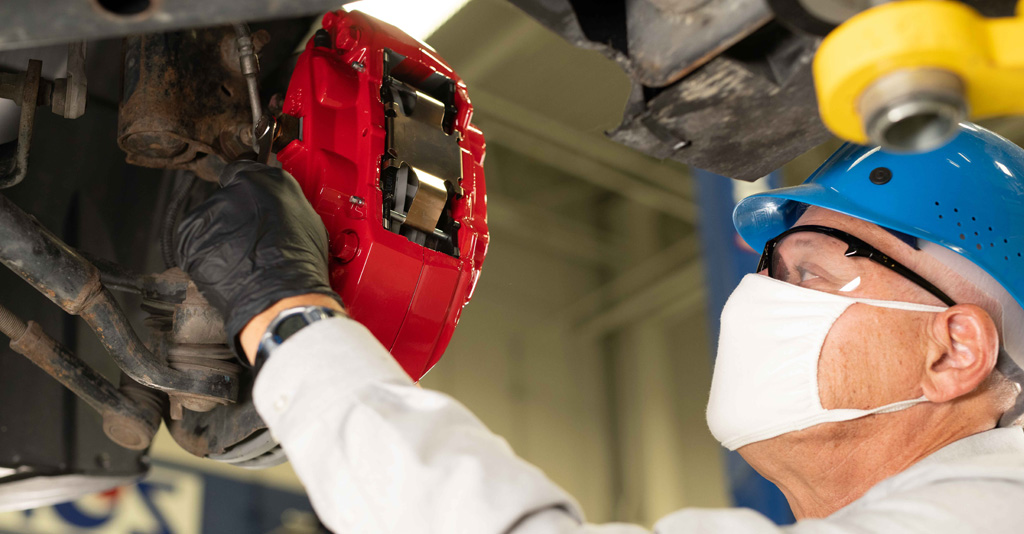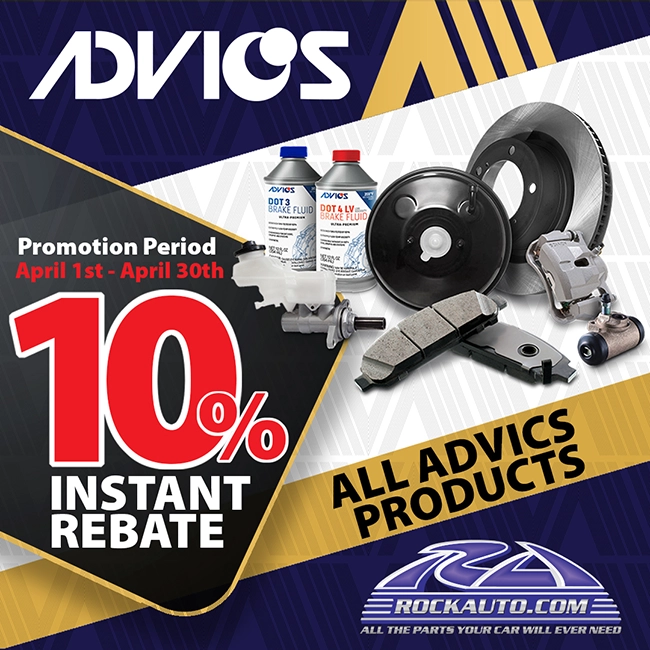
June 24, 2021
When a customer visits the shop because their brake service light is on, they’re hearing noise when the brakes are applied, feeling vibration or even smelling a chemical/burning odor when braking, it’s time to inspect the braking system to diagnose the problem.
Regardless of what the customer may think is wrong with the vehicle, as a technician, you know the importance of performing a full brake system inspection to ensure that you complete the right service for the vehicle.
We’ve put together a handy checklist, covering some of the most important areas to review when performing a brake system inspection:
- Test drive the car. Check for any noises, vibration, or abnormal smells when applying the brakes.
- Inspect the tires. Make sure there are no punctures or damage to the tires or rims that could be causing the symptoms your customer is experiencing.
- Check the vehicle’s suspension system. Again, this could be the cause of wobbles or vibration that your customer is feeling.
- Look for leaking, cracked or damaged hoses. Fluid leaks can cause big problems – make sure that everything is sealed and in good working order.
- If needed, replace any leaking or damaged steel lines.
- Replace any leaking or damaged calipers. We always encourage technicians to use an OE quality, ultra-premium caliper that is new, and not remanufactured. Check out ADVICS ultra-premium calipers here.
- Check brake master cylinder for leaks. Leaks can be a common cause for repair. ADVICS ultra-premium brake master cylinders feature OE-style reservoir connections to prevent leaks, and are made of corrosion-resistant materials to ensure a long service life.
- Test the brake pedal. Make sure movement is smooth and completely depresses.
- Inspect rotors and drums for damage. Low quality rotors can wear unevenly, causing pulsation when the brakes are applied and then, uneven pad wear. This can lead to more problems. Ultra-premium, high carbon rotors should always be used to help prevent these issues. Check out ADVICS ultra-premium brake rotors here.
- Replace brake pads. Pads should be thoroughly examined for wear. Remember, brake pads and brake rotors should always be serviced and replaced at the same time, using OE quality, ultra-premium brake pads. ADVICS brake pads feature industry-leading friction technology, advanced slots and chamfers as well as steel backing plates treated with anti-corrosion coatings that help extend system life.
Common brake pad wear patterns and what they mean:
– Tapered wear: can indicate worn caliper hardware
– Only one pad is worn: caliper or piston may be hanging up
– Grooved surfaces: may indicate problems with rotors
– Chipped surfaces: can be caused by excessive heat buildup/poor heat dissipation from the system
– Step in lining: brake pads aren’t aligned properly and may have been installed incorrectly - Service wheel bearings if needed.
- Lubricate caliper slides and shoe pads.
- Check brake fluid and flush if necessary. Often neglected, old brake fluid can cause problems if it’s not serviced regularly. The fluid should be light in color. If it’s very dark, it’s time to swap it out for fresh brake fluid.
- Adjust the parking brake, if applicable on the vehicle.
- Check and replace any faulty sensors.
Once you’ve completed a thorough review of all braking system components and performed the necessary maintenance, it may be useful to remind your customer of what factors contribute to excessive wear on their braking system:
- Too much load from carrying more weight in the vehicle than it is rated for
- Heavy or aggressive braking, especially from high speeds, can add additional and unnecessary wear onto the system
- Frequent driving in wet or extreme weather can create the need to brake more quickly to prevent slipping or skidding, again, placing additional wear on the system
Remind customers that their braking system is a major safety component in the vehicle, so making sure it is properly maintained is critical to staying safe on the road. By keeping a checklist handy, you can inspect brake systems quickly and accurately, ultimately making the correct repairs and getting the car back on the road as quickly as possible.

